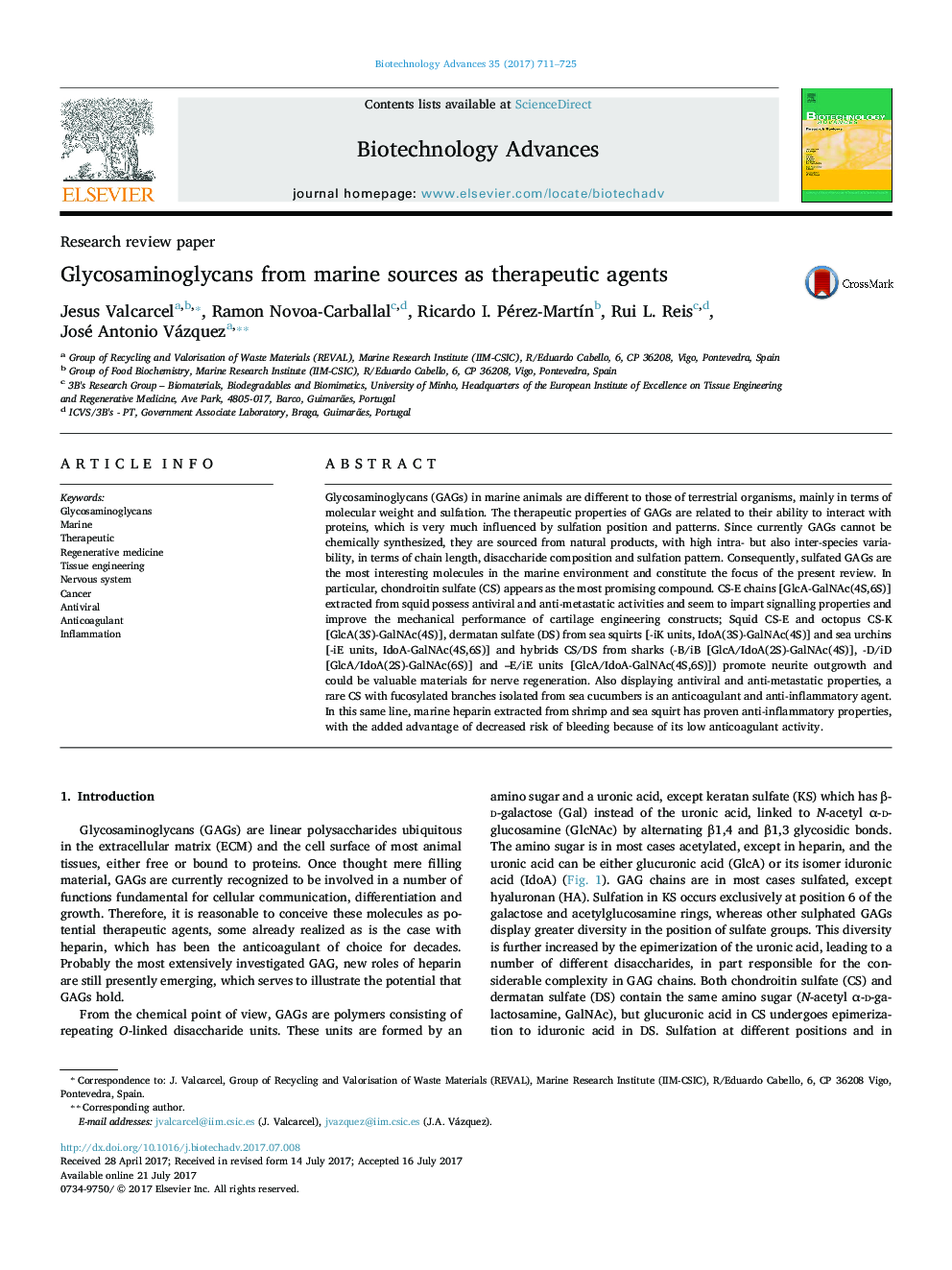| کد مقاله | کد نشریه | سال انتشار | مقاله انگلیسی | نسخه تمام متن |
|---|---|---|---|---|
| 6451159 | 1361329 | 2017 | 15 صفحه PDF | دانلود رایگان |
- Marine glycosaminoglycans (GAGs) are different to terrestrial GAGs in terms of molecular weight and sulfation.
- Sulfated GAGs are the most interesting therapeutic molecules in the marine environment.
- Squid CS posses antiviral and anti-metastatic activities and improves the properties of materials for cartilage engineering.
- Octopus and squid CS, shark CS/DS and DS from sea squirts and sea urchins could be valuable in nerve regeneration.
- Sea cucumber fucosylated CS displays antiviral, anti-metastatic, anticoagulant and anti-inflammatory properties.
Glycosaminoglycans (GAGs) in marine animals are different to those of terrestrial organisms, mainly in terms of molecular weight and sulfation. The therapeutic properties of GAGs are related to their ability to interact with proteins, which is very much influenced by sulfation position and patterns. Since currently GAGs cannot be chemically synthesized, they are sourced from natural products, with high intra- but also inter-species variability, in terms of chain length, disaccharide composition and sulfation pattern. Consequently, sulfated GAGs are the most interesting molecules in the marine environment and constitute the focus of the present review. In particular, chondroitin sulfate (CS) appears as the most promising compound. CS-E chains [GlcA-GalNAc(4S,6S)] extracted from squid possess antiviral and anti-metastatic activities and seem to impart signalling properties and improve the mechanical performance of cartilage engineering constructs; Squid CS-E and octopus CS-K [GlcA(3S)-GalNAc(4S)], dermatan sulfate (DS) from sea squirts [-iK units, IdoA(3S)-GalNAc(4S)] and sea urchins [-iE units, IdoA-GalNAc(4S,6S)] and hybrids CS/DS from sharks (-B/iB [GlcA/IdoA(2S)-GalNAc(4S)], -D/iD [GlcA/IdoA(2S)-GalNAc(6S)] and -E/iE units [GlcA/IdoA-GalNAc(4S,6S)]) promote neurite outgrowth and could be valuable materials for nerve regeneration. Also displaying antiviral and anti-metastatic properties, a rare CS with fucosylated branches isolated from sea cucumbers is an anticoagulant and anti-inflammatory agent. In this same line, marine heparin extracted from shrimp and sea squirt has proven anti-inflammatory properties, with the added advantage of decreased risk of bleeding because of its low anticoagulant activity.
144
Journal: Biotechnology Advances - Volume 35, Issue 6, 1 November 2017, Pages 711-725
